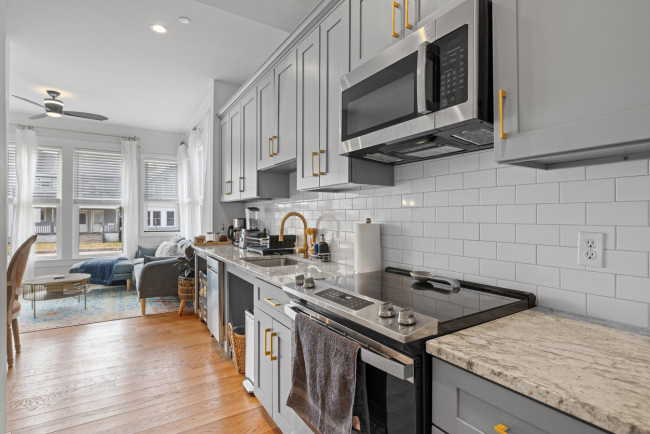Report: New Yorkers living in small buildings suffer most from heating issues

Several neighborhoods in Central Brooklyn and the Bronx had the highest rates of heat violations.
alexsl/iStock
If you live in a small multi-unit building in the city, you’re much more likely to be shivering this winter and calling your landlord with complaints about the heating—or lack of it. As New Yorkers deal with the effects of the polar vortex, an analysis of buildings with hazardous heating violations found three quarters were small buildings with only three or four units.
The study, carried out by data site Localize.city, looked at 150 New York City buildings with the worst violations over the past four years and found nearly half had three apartments in the building, another quarter had just four units and only seven buildings had nine or more apartments.
The study looked specifically at non-public housing buildings with three or more units. (New York City public housing residents have also been suffering. Thousands of NYCHA residents are without heat or hot water.)
Several neighborhoods in Central Brooklyn and the Bronx had the highest rates of heat violations. An interactive map shows Bushwick, Van Nest, Crown Heights, Wakefield, and Williamsbridge were the top five areas for heat violations.
The top three addresses for total heat violations over the past four years were:
509 West 134th St., West Harlem, 19 units, 20 violations
381 Vernon Ave., Bedford-Stuyvesant, 3 units, 18 violations
506 Brook Ave., Mott Haven, 9 units, 18 violations
A Warranty of Habitability protects tenants by requiring buildings are safe and livable, and that means from 6 a.m. to 10 p.m., between October and May, landlords must provide heat. You might be able to negotiate a rent abatement if you have an extended period without heating, whether it's due to a broken boiler or malfunctioning radiators. New laws could also require landlords to install temperature sensors in buildings where heating violations have been issued. The data would then provide an hourly record of the temperature in an apartment and be accessible online.
If one apartment has no heat, the data found it’s likely the entire building is without heat. So larger buildings with more units may mean more tenants are affected even if their violation rates are lower. The data poses questions about whether landlords in smaller buildings are less responsive to tenant problems or if there are problems in smaller buildings that are harder to address.
Localize allows you to search the violation history at a specific address. It can be a useful tool when you’re considering buying or renting in a particular building. “Knowing about chronic heat and hot water problems can empower you if you’re trying to hold your landlord accountable or can help you avoid moving to a frigid building in the first place," says Steve Kalifowitz, president of Localize.city.































